
views
Choosing a Wood Stain and Wood Finish
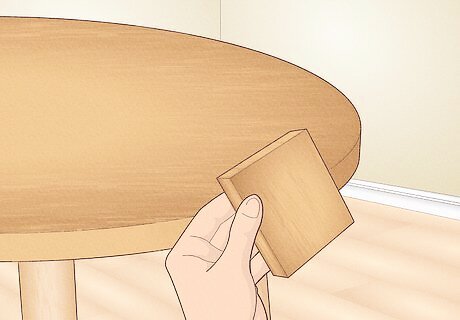
Find a wood sample of the same grain and species. Using a sample for comparison can help you find a more accurate match. The wood's grain and species can both affect how the stain will appear once it's dry. If you have any excess material in that same grain and species, use that as the sample. If you don't have material for a sample, identify the wood type of the piece of furniture you are trying to match and see if you can find anything similar. You can also purchase a wood identification kit.

Bring the sample to a paint or home improvement store. Stores like Sherwin Williams or Lowe's offer stain identification services. Compare your stain sample to the stains offered in the store. If you need help, an employee can give you even more information. If you'd like to save a trip to the store, compare your sample to the stains offered online by visiting the Sherwin Williams or Lowe's website.

Purchase a matching stain. After comparing wood stains, pick the one that matches your sample most closely. Since you won't know that the stain is a perfect match until you apply it, consider purchasing a few sample sizes to test out multiple stains. Alternatively, you can also purchase multiple stains with the intention of mixing them. This allows you to make a custom wood stain that matches the other stain.
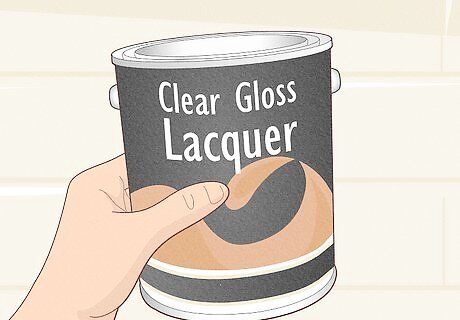
Pick a matching wood finish that meets your needs. To protect the wood's surface, it's important to apply at least one coat of finish after you stain the wood. Choose a finish that offers enough protection for the setting (indoor settings need less protection than outdoor settings), and opt for one that corresponds with the color and sheen of the wood stain you are trying to match. Lacquer offers a high amount of durability, so it's a great choice for outdoor furniture. For a glossier sheen, you might try Minwax Clear Gloss Lacquer. Minwax Clear Semi-Gloss Lacquer will give you a more subtle sheen. Water-based polyurethane offers similar durability while also being safer for the environment. Since it doesn't soak into the surface of the wood as much as an oil-based finish, it may lighten the wood stain slightly. Oil-based varnish seeps into the wood, deepening the color of the wood stain and making it appear slightly darker than before.
Testing Wood Stain to Find a Match
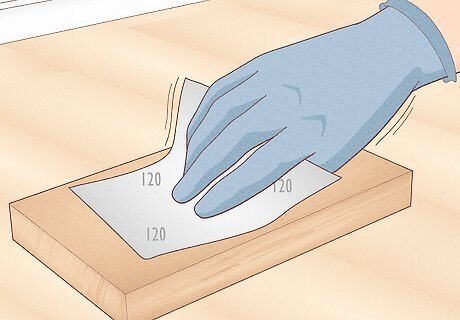
Sand down a piece of test wood. First, put on safety goggles, gloves, and a mask and set up your workstation in a well-ventilated area. Then, find a wood sample that matches the grain and species type of the wood you intend to stain. Sand it down using 120-grit sandpaper. After sanding, wipe down the wood with a cloth to get rid of any debris or dust. If you don't have a test sample, use a hidden part of the furniture to test your wood stain directly. You might try under a table if you're working with furniture. If you're staining the floor, try an area that is usually covered.
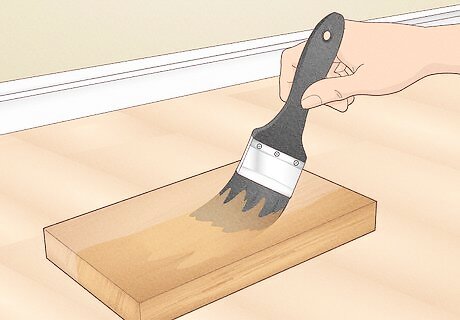
Apply the stain to the test sample. Stain the wood with a paintbrush in an even layer. For a smooth stain, use long brushstrokes that go in the same direction as the grain of the wood. Then, let the stain sit for 5-10 minutes (the longer you wait, the darker the stain). After, wipe off the stain with a clean cloth to keep it from darkening the wood more than you desire. The stain will be fully dry in 6 to 8 hours. Rags that are soaked with wood stain and finish are flammable. Safely store and dispose of the rags by airing each rag out separately or disposing of them at a hazardous waste collection site. Never leave the soaked rags in a pile.
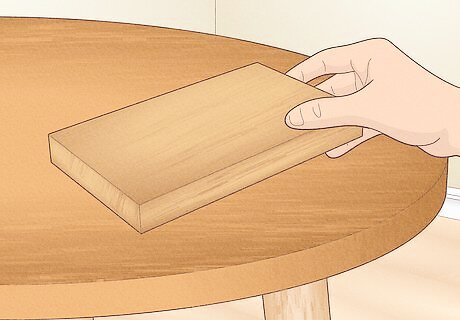
Compare the test sample and add another coat if necessary. Hold the test sample against the furniture or floor you are trying to match. To get an accurate match, make sure the lighting conditions you have been working in are the same as how you intend to display the matching wood stains. If the match is too light, repeat the process and add another layer of wood stain. Keep in mind that the finishing coat will also darken the wood slightly, which may mean you don't need another layer of wood stain. Keeping the lighting the same is important because fluorescent lighting, incandescent lighting, and natural sunlight bring out different tones in the stain.
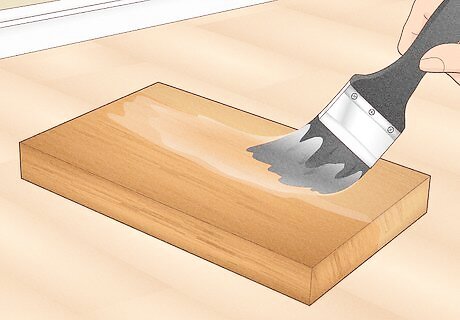
Add a finishing coat to your test sample. First, stir the finish with a stirring stick before applying it to the sample. Then, finish the wood by applying an even layer of lacquer, polyurethane, or varnish with a paintbrush. Use long, smooth strokes to coat the surface, and make sure your strokes go in the same direction as the grain. Drying times vary depending on the type of finish. After the finishing coat is fully dry (no longer sticky), consider adding another layer to darken the color of the wood slightly. Before applying the second coat of finish, read the instructions on the label to see if the wood needs to be sanded first.
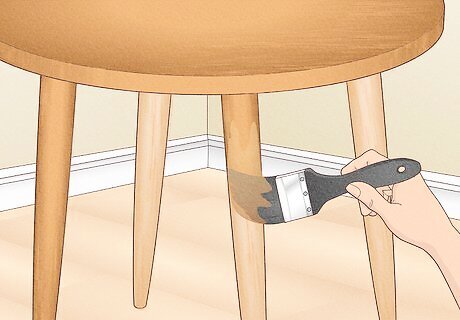
Prep, stain, and finish the furniture or floor when you find a match. First, prepare the wood for staining by sanding it down with 120-grit sandpaper. Then, stain the wood with the matching stain by applying it with a bristle brush. Use long, even strokes in the direction of the grain for an even coat. Wait 5-10 minutes for the stain to reach the color you desire. Then, wipe it off with a clean cloth. Finish the wood using the lacquer, varnish, or polyurethane of your choice. To darken the wood slightly, add another layer of finish once the first layer dries.
Mixing to Make a Custom Wood Stain
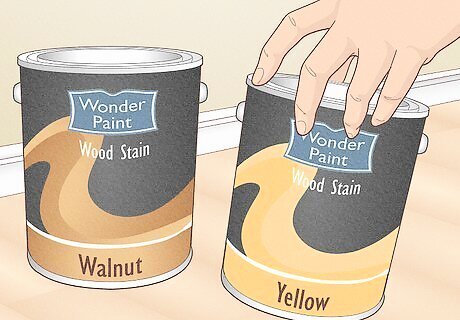
Choose a primary and a secondary wood stain. If you're not able to find the right match, mixing 2 different stains can help. First, pick a primary stain color that is as close to your desired wood stain as you can find. Then, pick a secondary color that will add the tone and color that you're looking for. Make sure both stains are of the same undertone and base (oil or water-based). If you aren't sure, ask an employee or read the product description closely. Stain undertones include yellow, orange, red, pink, and walnut. To save money during the mixing process, ask to purchase stain samples when you visit a paint or home improvement store.

Pour a small amount of each stain into separate cups and stir. Wear gloves to keep your hands protected and use a stirring stick to make sure the stains are adequately mixed before being combined. To make the process easier, use measuring cups to dispense the wood stain so you can keep an accurate record of how much you use.

Combine both stains in a mixing bowl and stir them together. There is no exact recipe for mixing wood stain, but it's important that you record how much of each you add to the mixing bowl. That way, you will have a reference if the mixture matches and you need to make more.
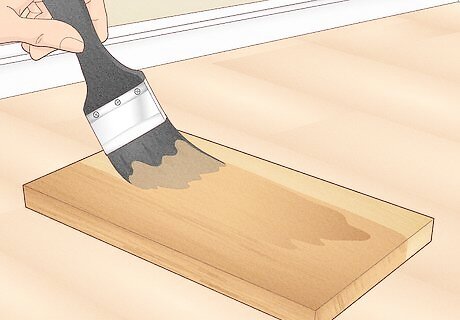
Test out the new stain on a wood sample. Dip a paintbrush into the mixture and paint a piece of test wood of the same grain and species as what you're trying to match. Wipe it off after 5-10 minutes with a clean cloth and check if it matches.
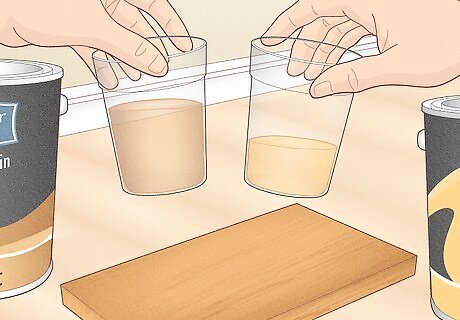
Try out different ratios until you find an accurate match. Keep adding small amounts of each stain to change up the tone and color. Each time you change the mixture, write down the ratio or measurements so that you have a reference.




















Comments
0 comment